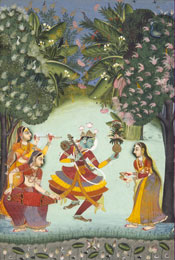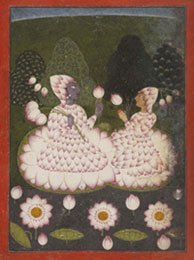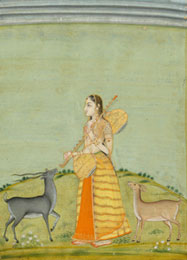
  
The history of traditional Indian painting is a sumptuous tapestry of interwoven traditions interests, and connections. Drawing from collections throughout Australia, both public and private, this exhibition of more than 70 works surveys the major schools of Indian painting, highlighting the rich interactions that inspired each tradition. Indian painting is the result of varied intimate encounters: Islam with Hinduism, Buddhism, and Jainism; the mighty Mughals with the romantic Rajputs; European outsiders with native populations; the artist with the patron; the coloniser with the colonised. The exhibition is divided into 4 sections: Pre-Mughal Past, The Mughals, The Rajputs and The Colonial Enterprise. The Pre-Mughal Past introduces the painting traditions that existed in north and northwest India prior to the Mughal Dynasty (1526-1885). The Mughals presents splendid examples of painting created under the aegis of the most influential Islamic dynasty to rule the subcontinent. The Rajputs is divided into two subsections. The first focuses on the painting produced for the Hindu rulers of a number of independent kingdoms in the desert state of Rajasthan in northwest India, and the second includes works from the Rajput principalities of the Punjab Hills, the region at the foothills of the Himalayas. The final section surveys the dramatic changes that occurred under British colonial rule. On display is a charming painting from the Punjab Hills region that the Art Gallery of New South Wales recently acquired. It shows the Hindu god Krishna and his beloved Radha covered from head to toe in lotus petals. The divine couple share a playful, intimate moment in the midst of a lush garden, by the edge of a lotus pool. The rich colours and the special fondness for depicting nature are typical of paintings from the Punjab Hills. Chaya Chandrasekhar, the gallery’s curator of South and Southeast Asian Art selected the works for the exhibition and said: The manifold connections and interactions that led to the production of traditional Indian paintings are as rich, as complex and as captivating as the subjects they depict. The selection of works in this exhibition provides a glimpse at this seductive world of intimate encounters. Later this year Chaya will take up the Art Gallery Society 2008 travelling scholarship to conduct research on museum collections in India. 
Celebrating Asian Art and Culture
|